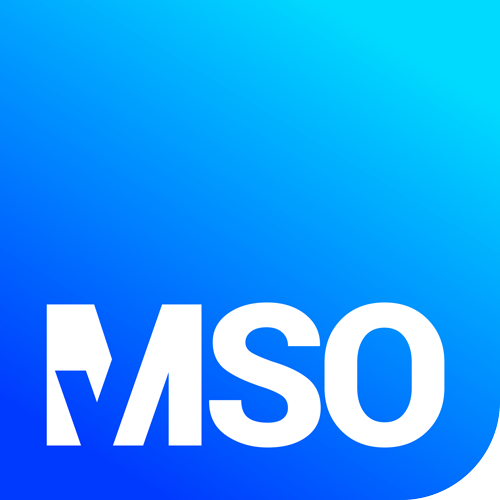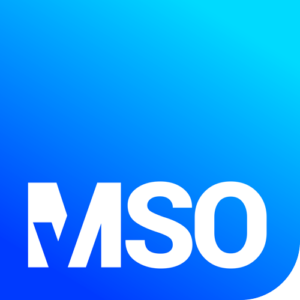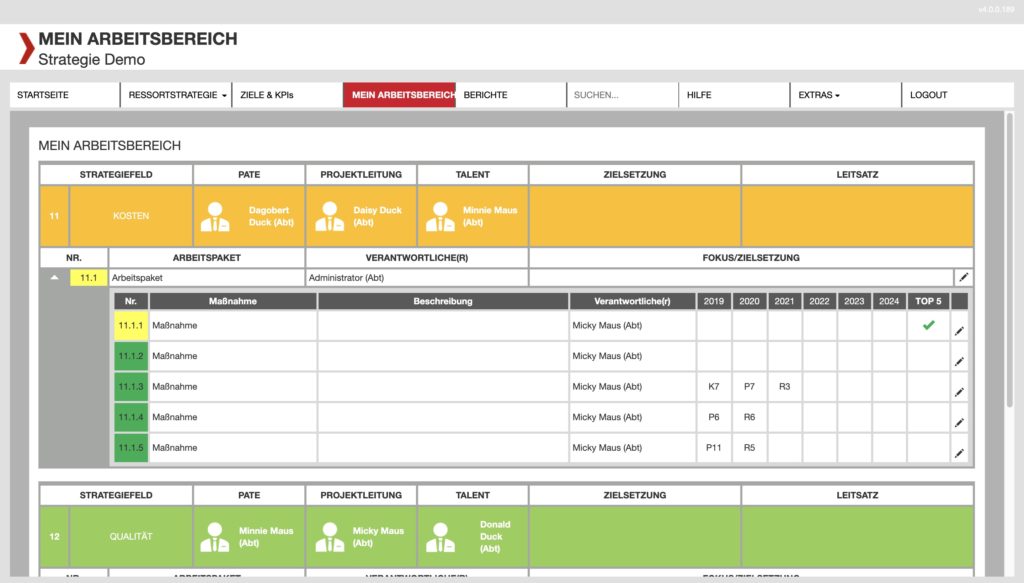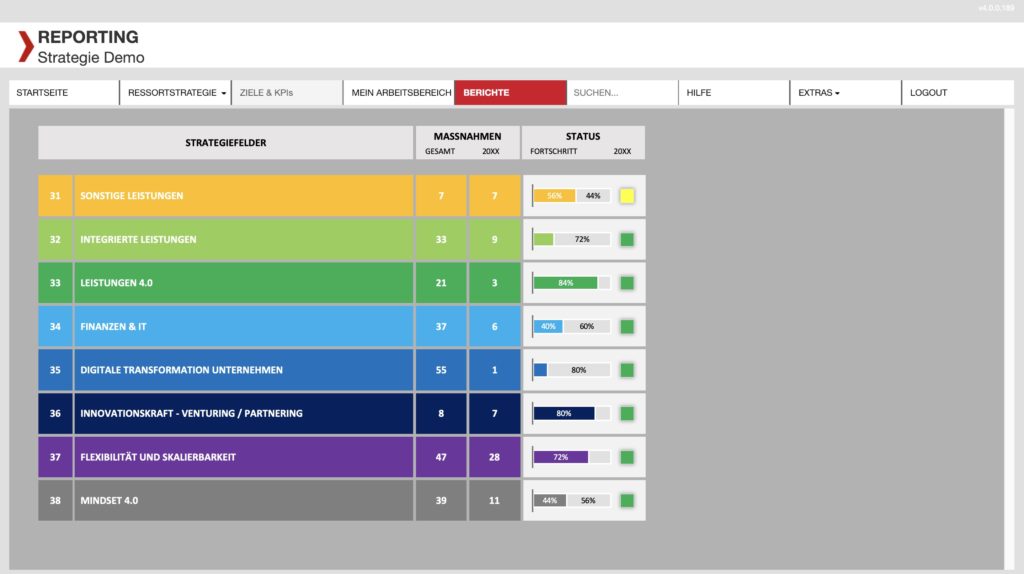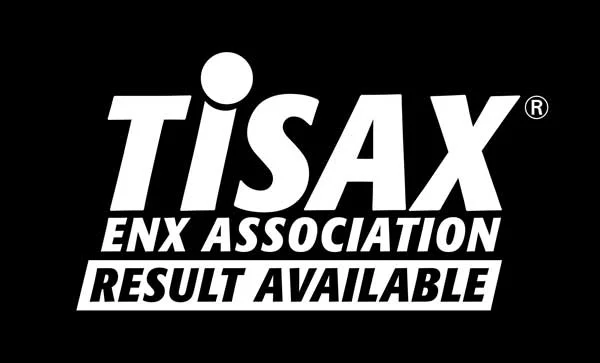An agile and consistent strategy management enables the management to control the development progress of the company and to react quickly to changes if necessary. MSO’s strategy management tool supports you in making your corporate vision an integral part of your everyday business – from the formulation of individual goals to their implementation throughout the company.
According to a study on strategy implementation by the Harvard Business Review from 2017, in which 7,600 managers from more than 30 industries (primarily financial services, information technology, telecommunications, oil and gas) were surveyed, the complexity of the corporate structure in the implementation of goals represents the biggest problem of strategic management and thus ranks ahead of a lack of budget or an excessive and confusing number of goals.
The consequence: On average, only 60 percent of the companies are able to achieve their financial targets. So how do you achieve better results or more success?
Two options are available to companies in this regard: Either change the strategy and formulate new goals. Or, one gets the maximum out of the existing – probably already very good – strategy. But how exactly is this to be achieved? The answer: through optimal implementation! And exactly for this purpose a functioning strategy management is absolutely necessary.
Difference between strategy management and strategic management
First of all, a distinction must be made between “strategic management” and “strategy management”. The former describes exclusively the development, planning and implementation of content-related objectives and alignments of organizations, in short: the development of a corporate strategy. In contrast, “strategy management” describes the concrete control and operationalization of this developed strategy.
In the best case, the goal of a corporate strategy should be to secure the company’s existence, open up new market segments and develop new business models. The systematic further development of existing business areas and the search for new growth potential is one of the main tasks in business development.
Strategic management: the path to a corporate strategy
In principle, the corporate strategy is derived from the combination of the following three components: the mission, the vision and the internal mission statement.
The mission describes the ultimate purpose of the company and could be formulated as follows: “We want to help companies achieve their strategic, tactical and operational goals. And thereby secure their existence and improve their competitiveness.” The corporate vision expresses a long-term goal and represents the ideal image of the company. Using the above example, it could read as follows: “All successful companies worldwide manage their projects and tasks with MSO.” The internal mission statement is a concrete catalogue of measures that defines how employees interact with each other and how they work together, i.e.: “How must we behave, what must we do – what values must we represent – in order to help all companies in the world to succeed?”
The success of a company can usually be traced back to its vision. Three factors are of decisive importance here: First, the mission must be communicated to all employees. In the second step, the management level is required to constantly exemplify the mission and above all the internal mission statement.
Ultimately, all actions and decisions in everyday life must fit in with the formulations in the mission statement and the strategies derived from it.
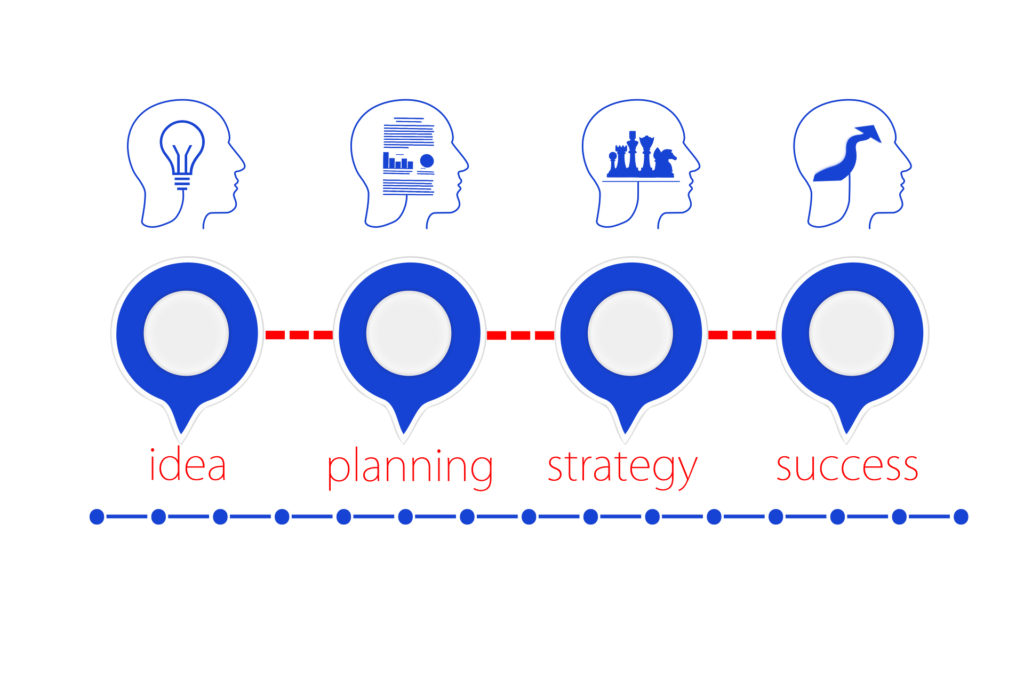
Development, operationalization, implementation
Strategy development and its implementation are basically two separate phases. While development often takes place in small teams (at decision-maker level), implementation affects the entire company. In order to implement a strategy effectively and sustainably, two conditions must be met: On the one hand, every employee must (be able to) identify with the goals and signal a corresponding willingness to implement them. On the other hand, systematic operationalization is required. This is the only way to build a bridge between strategy development and implementation.
A meaningful operationalization embeds the strategic initiatives in the company, synchronizes them with the operational tasks and sets the focus of the organization on the actual implementation. To create a company-wide understanding of the measurement factors, it is important to integrate the next levels into the process. In this cascading process, the higher-level strategic goals are broken down to the divisions and departments and assigned targets.
In this way, the employees themselves develop concrete actions to implement the measures and define responsibilities for each individual action. In this way, everyone is involved in the process of strategy implementation at an early stage and gets a concrete idea of the contribution they can make in their daily work. It is the task of the managers in this step to maintain an overview of all strategic initiatives. In addition, they act as mentors or moderators and support employees in finding suitable measures.
During the implementation process, continuous monitoring and early countermeasures in case of possible deviations from the target are required. Transparency at all levels in the company and a visualization of the success achieved by the implemented measures and actions, accessible to everyone, is urgently needed. This is the only way to react in the short term to possible deviations from the plan.
The MSO Strategy Manager: individual –agile – clear
Sustainable strategies are characterized by the fact that they fit seamlessly into the corporate context. A software solution for controlling the corporate strategy must meet this requirement at all times.
The web-based MSO Strategy Manager consists of a proven basic architecture and numerous functionalities that are developed and adapted in cooperation with the companies using the software. The result is a product that exactly meets the specific requirements of the users – individual, agile, clear.
The Strategy Manager is based on four essential building blocks: processes (workflow), the organizational structure, management (controlling) and reporting. In addition, the personally configurable work area (cockpit) enables transparent tracking of all strategic measures for which one or more users are responsible.
Conclusion
Nowadays, entrepreneurial success depends more than ever on the development and implementation of the right strategies. The path from an abstract master plan to a multitude of concrete projects and measures usually turns out to be the biggest stumbling block. Here it is important to create an overview, to keep it and to implement a structured approach in the company. With the right software – individually tailored to your company – you save the time and money that you would otherwise have invested in non-target-oriented measures and projects.
